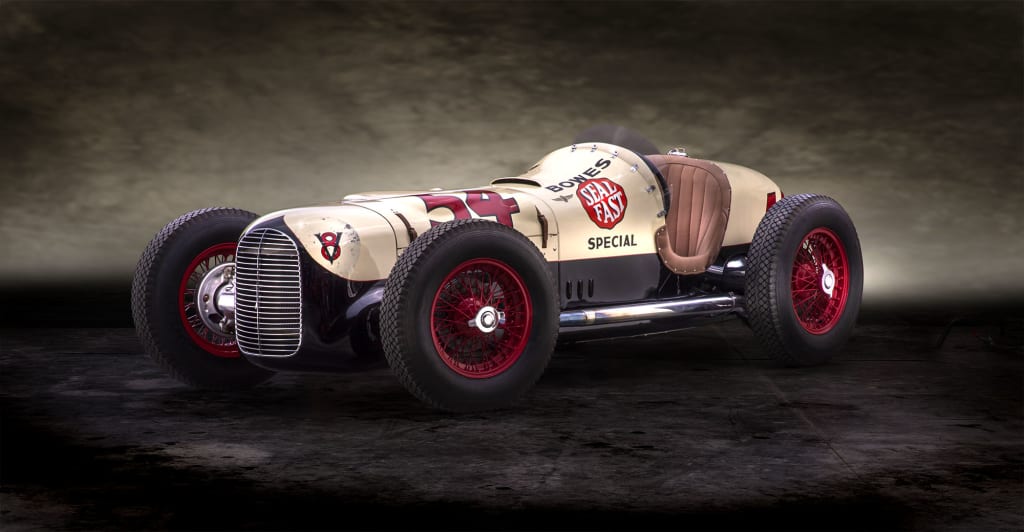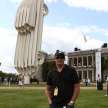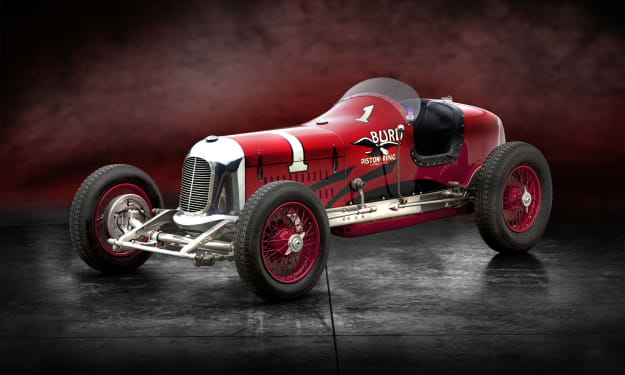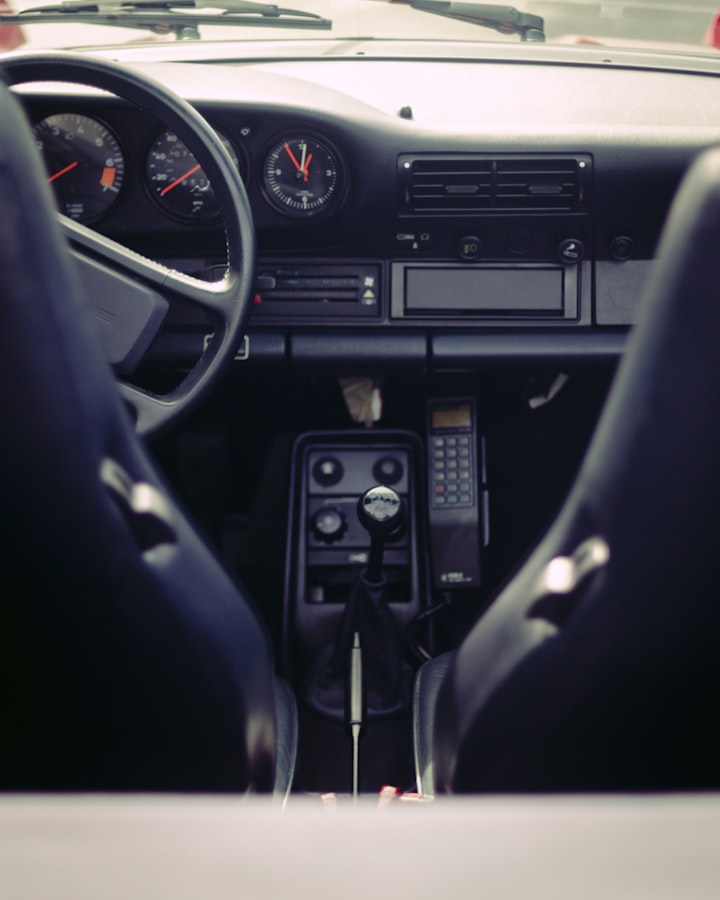1935 Miller 2-Man Seal Fast Special
A Legacy of Racing Excellence - from the Malloy Collection

By Dean Kirkland
Tom Malloy, a seasoned collector with a discerning eye for automotive treasures, has always been transparent about his approach to acquiring vintage cars. "Auctions aren't really my scene," he often shared with fellow enthusiasts. "There's something about the directness of negotiating one-on-one with a seller that appeals to me. Plus, why should I pay an auction premium on top of the car's price?" While he generally avoids the auction circuit, there are exceptions to every rule. The 1935 Miller-Ford 2-Man Indy Seal Fast Special was one such exception. This exquisite racer, being the fifth in an exclusive series of just ten, represented a rare find in the automotive world. When it was announced that this car would be part of the 2003 auction, following the unfortunate demise of Joe MacPherson and the decision to liquidate his auto dealership's prized collection, Tom felt an irresistible pull. "Such opportunities are few and far between. This car isn't just a vehicle; it's a piece of art, a testament to the golden era of racing," Tom passionately expressed.
The 1935 Seal Fast is more than just a marvel of engineering; it's a symbol of a transformative period in the world of motorsports. The creation of this 2-Man racer can be credited to the ambitious vision of Preston Tucker, a name that resonates with innovation and forward-thinking in the automobile sector. Tucker, having built a close professional relationship with the legendary Harry Miller, saw an opportunity for collaboration that could change the face of racing. With his persuasive skills, he convinced Ford Motors to back an ambitious project: the production of ten race cars, specifically designed for the adrenaline-charged environment of the Indy 500. The collaboration was set – Ford would supply the powerful V-8 engines and the essential running gear, while the genius of Harry Miller would be responsible for crafting the rest of these racing masterpieces. The goal was clear: a victory at the Indy 500 would not only bring glory but also significantly elevate the demand and sales for Ford's V-8 engines in the market.
The journey to racing glory was anything but smooth. The initial financial backing from Henry Ford amounted to a modest $25,000. While this might seem like a significant sum, it was a drop in the bucket considering the grandeur and complexity of the project at hand. Harry Miller, a mastermind in automotive design and engineering, was faced with an almost insurmountable challenge. He had a mere 79 days to bring to life ten state-of-the-art race cars, each designed to outperform the best in the business. As the 1934 Indy 500 approached, the pressure was palpable. Despite the team's relentless efforts, only four cars were race-ready. Among them, the standout performance reached a commendable speed of 113.213 mph. However, racing is unpredictable, and despite its potential, the car managed to complete only 145 of the grueling laps, landing it in the 17th position. To add insult to injury, the total expenditure for the project ballooned to a staggering $75,000, three times the initial budget. This financial overrun left Henry Ford incensed. In a move to control the narrative and prevent any potential PR disaster, he made the decision to seize all ten cars, ensuring they remained hidden from the public eye and the prying lenses of the media.
However, legends have a way of living on, and the Miller-Ford 2-Man Seal Fast was no exception. Its story, whispered among racing circles, became the stuff of legends. The car's innovative design, combined with its tumultuous history, made it an object of fascination for racing enthusiasts and collectors alike. The public outcry and the persistent interest from the racing community eventually softened Ford Motors' stance. Recognizing the potential of these machines and the passion they evoked, the company decided to sell the cars to dedicated racers and enthusiasts. Under new ownership, these cars underwent significant modifications to enhance their performance. The original Ford Flathead V-8 engines were swapped out for the more powerful and efficient Offenhauser engines. With this upgrade, the Miller-Ford racers were reborn, roaring back to life on the tracks of the Indy 500 in the years 1937, '38, '39, and '40. Each race further solidified their legendary status in the annals of racing history.
The true transformation of the Ford-Miller 2-Man came with the integration of the Novi V8 supercharged engine. This wasn't just a mere upgrade; it was a monumental shift, comparable to turning a basic tune into a full-blown orchestral masterpiece. "The engine's capabilities were amplified exponentially. From a humble 80 horsepower, it skyrocketed to an astounding 400," Tom elaborated with evident pride. "While the core structure, the frame, retained its original design, the external body saw extensive overhauls. This included a sleeker, more aerodynamic nose, adjustments to the cowling for better airflow, and tweaks to the drive center to accommodate the enhanced power." But what truly set the Novi V-8 apart was its unique centrifugal supercharger. This piece of engineering genius not only boosted the car's performance but also produced a distinctive, roaring sound that became synonymous with the Novi brand. Tom fondly recalled an event that showcased this iconic sound, "At the 2017 Indy Vintage Event, I didn't hold back. Pushing the car, especially around Turn 2, the Novi's roar resonated across the track, drawing cheers from its dedicated fanbase." He added, "This car has a magnetic pull. Its legacy attracts enthusiasts and admirers wherever it makes an appearance."
After its remarkable stint in the 1941 Indy 500, the Ford-Miller 2-Man entered a period of dormancy. The global upheaval caused by World War II led to the temporary cessation of many sporting events, including the famed Indy 500. This racing marvel, thus, went into a hiatus, waiting for the world to return to normalcy. The passage of time, however, did not diminish its allure. In 2003, the tides of fate brought the racer to Tom Malloy. Recognizing its historical significance and unparalleled engineering, he acquired this legendary machine. Today, under Tom's meticulous care, the Ford-Miller 2-Man stands as a timeless testament to racing history, preserved in the same majestic form it boasted in 1941.
About the Creator
Dean Kirkland
Dean Kirkland, seasoned director & cinematographer. With a passion for cars & visual storytelling, Dean's work resonates, leaving a lasting impact. Dive into a world where every frame tells a story.






Comments
There are no comments for this story
Be the first to respond and start the conversation.